תוכן העניינים
אם אתה עומד להשקיע בגידול חממה, אתה חייב כבר לדעת את הערך של האור עבור הגידולים שלך. חיי הצומח יוצרים מערכת מורכבת של תהליכים ביולוגיים סביב אותות שמש. גופי תאורה לחממה יספק לצמחים את האור הדרוש לתגובות הכימיות הנחוצות לקידום פוטוסינתזה, צמיחה והתפתחות בהיעדר אור שמש.
זה הופך להיות חשוב יותר ויותר לבריאות ולתפוקת היבולים.
בין אם תחליטו בצע שינוי קיצוני עם אור חדש לגידול LED לחממה, הישאר עם נורות HPS מנוסים, או בצע כמה שדרוגי יעילות לתאורת היבול הנוכחית שלך, המשך לקרוא.
כאן, אנו מספקים מדריך לגופי תאורה לחממה שיוצרים את אקלים החממה הטוב ביותר עבור הגידולים שלך.

האם אתה צריך אורות גידול בחממה?
גידול בחממה מגן על יבולים מחוסר יציבות אקלימית. יחד עם זאת, הוא מגן עליהם מפני בעלי חיים, ציפורים ומזיקים הפוגעים בצמחים צעירים. חיסרון נוסף, הצמחים כמעט ולא נחשפים לאור ישיר.
ישנם סוגים רבים ושונים של חממות בשוק כיום. הם יכולים להיות עשויים מפלסטיק, זכוכית או פוליקרבונט, והכל במבנה המורכב מקירות שקופים וגג. תכונות הבנייה שלהם מאפשרות לאור השמש לחדור לתוך החדר, אך גישה חופשית לאור טבעי ללא מגע ישיר. חקלאים המגדלים גידולים באור נמוך מעוניינים להסתמך על אור טבעי והם אינם שוקלים להכניס אור מלאכותי לחממה.
אם יש לך תוכנית גידול חורפית, אתה צריך מערכת תאורת חממה. מעוצב כדי לענות על הצרכים הספקטרליים של צמחים בכל שלבי הצמיחה, זוהי הבחירה היעילה ביותר עבור מגדלי חממות. בין אם אתם מתחילים שתילים או מחפשים לגדל פירות וירקות במהלך החורף, זהו אביזר חובה לחממה.
סיכום קצר
- כאשר תנאי מזג האוויר מאתגרים, אורות צמחים יכולים לווסת את האקלים כדי לקדם צמיחה בריאה יותר של צמחים.
- ניתן להשתמש באורות לגידול צמחים בחורף כאשר השמש שוקעת מוקדם יותר כדי להאריך את שעות האור עבור שתילים.
- אתה יכול גם להגדיר את האור להידלק לאחר השקיעה אם הצמחים לא מקבלים את האור שהם צריכים על בסיס יומי.
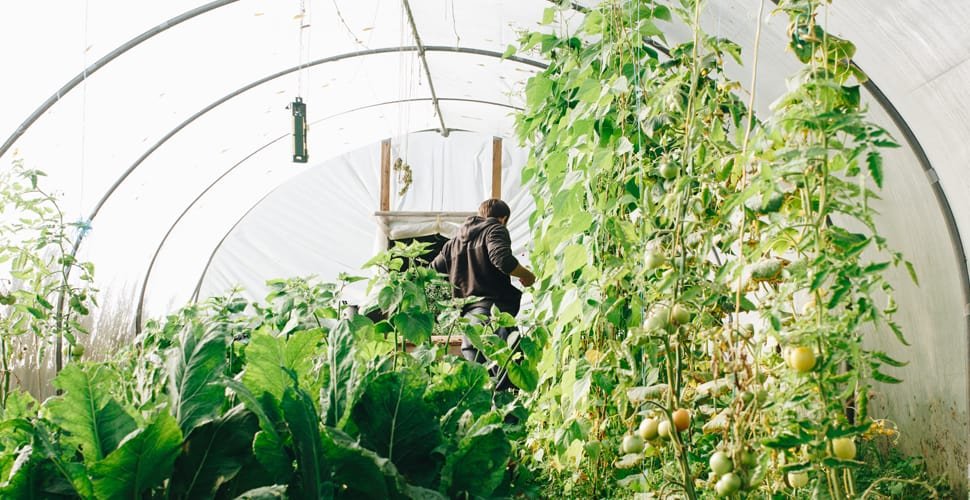
צמחים באור נמוך זקוקים לאור שמש חלקי בלבד, גם אם החממה שלך לא מקבלת מספיק אור שמש. לעומת זאת, אם הצמחים שלכם אוהבי אור וזקוקים לחשיפה מלאה לשמש, השתמשו בתאורה המשלימה של החממה.
זוהי בחירה מתאימה למתחילים ולמתחילים כמו גם לגננים מושבעים. מגדלים יכולים לגדל צמחים לעונות שונות ולהפיק מכך תועלת רבה יותר.
הבנת גופי תאורה לחממה
לאחר שהבנו את הסיבות לשימוש בגופי תאורה לחממה בחממות, בואו נצלול לתוך היישום שלהם.
לספק אור משלים
אי קבלת מספיק אור היא בעיה בחממות במהלך החורף. כאשר הצמחים אינם מקבלים מספיק אור, הם נמתחים כדי לספוג את מקור האור הקרוב ביותר לייצור סוכרים חיוניים מהצומח. התנהגות זו עלולה להוביל לצמחים כבדים ביותר, גבוהים מדי ודקים. כדי להימנע מהפניית אנרגיה מעלים ופרחים לגבעולים, מערכת תאורת חממה יכולה לשפר מצב זה על ידי לספק מספיק אור כדי לעזור לצמחים לפרוח.
מספק יותר מדי אור
במהלך היום, צמחים סופגים אור ומים כדי לייצר עמילן וחמצן. בלילה, צמחים ממירים עמילן לסוכר ומאחסנים אותו. גופי תאורה לחממה עשויים לעבוד זמן רב מדי גם תוך סיכון לפגיעה בבריאות הצמחים. כדי להימנע מכך, כבו אותם והעניקו לצמחים כ-8 שעות של חושך חופשי לאחר שחזרתם את האור הנדרש.
פריסה נכונה של מנורות
יש צורך למגדלים לתכנן את פריסת המנורות שלהם, בהתבסס על סוג הצמח, גודל החממה ומרווח הצמח. חלק מהמגדלים מפיצים מנורות בצורה לא אחידה, מה שגורם לצמחים מסוימים לצמוח היטב בעוד שאחרים מפגרים מאחור.
בעוד צמחים שונים עשויים להיות דרישות אור אחרות, באופן כללי, חממה מסחרית נורות גידול אמורות לפלוט 20 עד 40 וואט של אור לכל רגל מרובע. האור צריך להגיע גם לכל העלים של כל צמח, להקפיד לא לרווח את הצמחים קרוב מדי זה לזה או שהעלים יחסמו את האור מצמחים אחרים.
פתרון גופי תאורה לחממה
מַשׁלִים. כדי לקדם פוטוסינתזה, אור מלאכותי בחממה משמש בשילוב עם אור שמש טבעי.
תְקוּפָתִי. תאורה משלימה משמשת רק כדי לאפשר שליטה על משך אור היום.
חלופה מלאה לאור יום. אפשרות זו מאפשרת שליטה מרבית על תהליך גידול הצמח. ראוי לציין כי החלפת אור יום מלאה משמשת רק בחדרים עם סביבה מבוקרת אקלים.
סיכום קצר
- אם אור טבעי אינו מספיק, נא להתקין תאורה משלימה לחממה.
- חממות דורשות בדרך כלל 6 שעות של אור ישיר ביום.
- הנח את האורות שלך והשתמש בפתרון תאורה סביר כדי להפיק מהם את המרב.
- יש לאפשר לצמחים זמן גידול כהה חופשי בשפע.
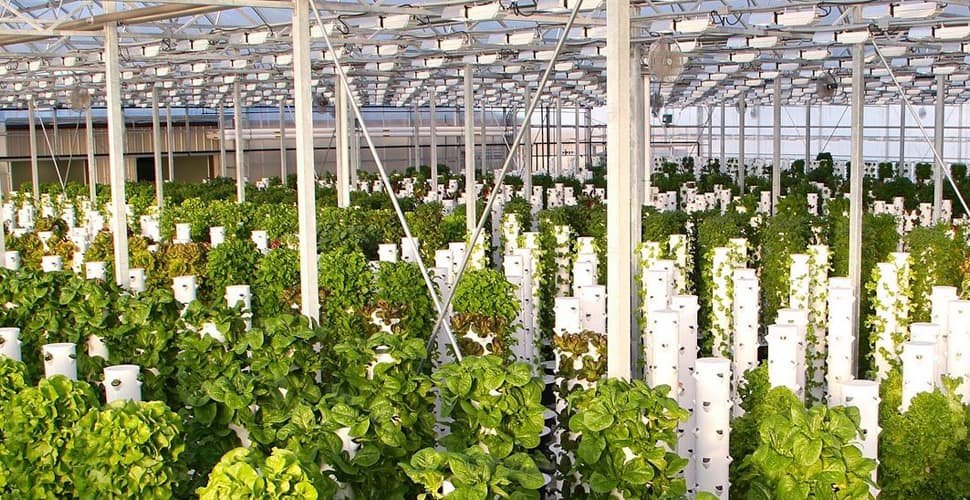
מהי התאורה הטובה ביותר לחממה?
כדי למצוא את אורות הגידול הטובים ביותר לחממה, מגדלי החממות צריכים לשקול שלושה גורמים: סוג הצמחים, הזמן בשנה וכמה אור שמש זמין באופן טבעי.
למגדלים יש מגוון אפשרויות. למי שלא מכיר את הטרמינולוגיה או חדש בצמיחה, חשוב להבין את כל סגנונות התאורה השונים. בואו נסתכל על השימושים והיתרונות שלהם.
נתרן בלחץ גבוה (HPS Grow Light)
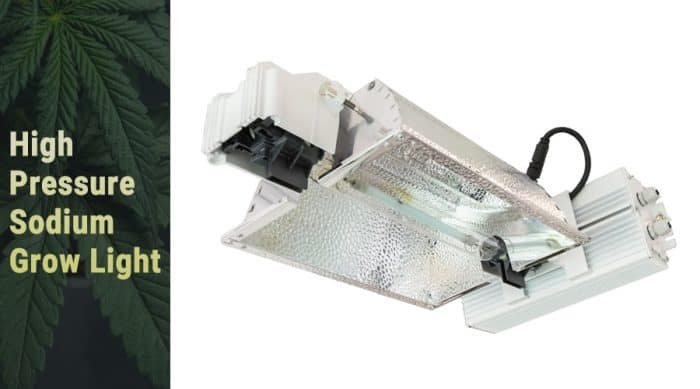
ה מנורת חממה נתרן בלחץ גבוה פולט יותר אור כתום ענבר ואדום יותר. לאור בהיר ועז יש השפעה חיובית על קידום נביטת ופריחה של צמחים. זה עובד הכי טוב בשימוש מאוחר במחזור הצמיחה של הצמח. הוא יעיל פי שבעה יותר מאור ליבון ועובד היטב בשימוש באור יום טבעי.
זכור לחמם מראש את מנורות HPS למשך 4 עד 5 דקות ולקרר אותן למשך דקה. הם אינם מתאימים לחממות בהן האורות נדלקים ומכבים לעתים קרובות. כמו כן, חשוב לציין כי מנורות HPS צריכות להיות מותקנות 30 עד 36 אינץ' מעל הצמחים לקבלת התוצאות הטובות ביותר.
- מספק ספקטרום טוב של אור שהוכח כמתאים לצמחים.
- מנורות HPS אינן מתאימות לחממות בהן האורות מופעלים ומכבים לעתים קרובות.
- אלטרנטיבה זולה יותר מאשר אפשרויות אחרות בשוק.
- מספק חום נוסף, שמועיל בחורף.
- גודלו קטן יותר מנורות LPS או פלורסנט.
- חסכוני באנרגיה ובעלות נמוכה.
נורות LED לגידול חממה
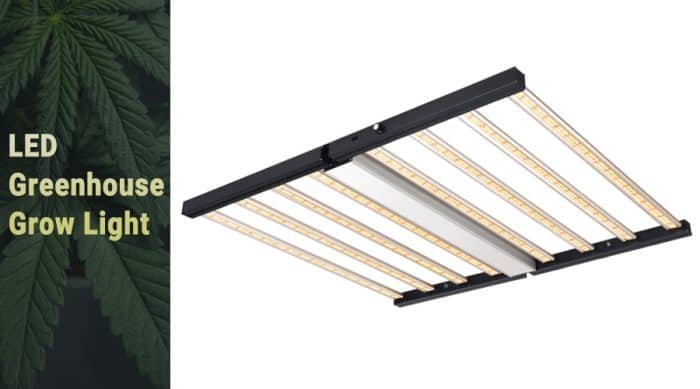
לדים כבר לא חדשים, הם כן הבחירה המתמשכת והאידיאלית ביותר. הם כן יעיל יותר מנורות צמחים אחרים כי יותר מכניסת האנרגיה עוברת לאור ולא לחום.
7 היתרונות המובילים של תאורת חממה משלימה LED הם כדלקמן.
- ניתן למקם מתקנים קרובים לצמחים כדי להגביר את היעילות ולהאיץ את מחזור הקציר של הצמח.
- הארך את שעות האור מבלי לאבד את השפעות הזריחה והשקיעה.
- נורות LED צורכות 30% פחות אנרגיה מנורות פלורסנט, ומפחיתות את השימוש הכולל באנרגיה בעד 75%.
- בקרת ספקטרום משתנה עם כוונון אור גמיש כדי לספק אור אופטימלי לצמחים
- נורות LED מחזיקות מעמד זמן רב יותר מנורות מסורתיות והן זולות יותר לתחזוקה.
- תהנה מאיכות אור עקבית כל השנה.
- גופי תאורה לחממה שתוכננו במיוחד הם בדרך כלל בדירוג עמיד למים IP65.
Metal Halide Grow Light (MH Grow Light)

נעשה שימוש במנורות מתכת הליד מכיוון שהן פולטות אור כחול, אך נראות לבנים בוהקים לעינינו האנושיות. באופן מסורתי, מגדלים מקורה משתמשים באורות מתכת הליד בשלב התזונה של גידול הצמח. הוא אידיאלי לשלבי הפריחה וייצור הפירות מכיוון שהם מחקים את אור השמש העונתי של האביב ותחילת הקיץ.
כמו עם מנורות HPS, נדרש חימום מוקדם. מנורות מתכת הליד צריכות להתחמם במשך 5 דקות ולאחר מכן להתקרר במשך 5 עד 10 דקות לפני שניתן להפעיל אותן מחדש. מנורות מתכת הליד קרמיות, כמו HPS, צריכות להיות תלויות 30 עד 36 אינץ' מעל הצמחים כדי לקבל את האפקט הרצוי.
- תוחלת החיים הממוצעת של 8,000 עד 15,000 שעות.
- מנורות MH יעילות פי 3 עד 5 מנורות ליבון.
- צריך לסובב מנורות לצמיחה אחידה של הצמח.
- מנורות MH אינן מתאימות לחממות בהן האורות נכבים ונדלקים לעתים קרובות.
צינורות פלורסנט T5

T5 אידיאלי לגידול בחממות, הידרופוניקה, מחסנים ואסמים. וזה מושלם לשלב השתיל של צמחים כדי להבטיח צמיחה אחידה.
צורת הצינור של המנורה מסומנת כ “ט” והמספר 5 מציין את קוטרו. מנורות אלה דקות, רק 5/8″ בקוטר, מה שהופך את צינורות הפלורסנט הללו ליעילים ופופולריים יותר מנורות פלורסנט סטנדרטיות.
- מנורת T5 צורכת פחות אנרגיה ויכולה להחזיק מעמד עד 50,000 שעות.
- יש לו תפוקת לומן גבוהה מאוד עם תפוקת חום נמוכה במיוחד.
- הוא מצויד ברפלקטור מאלומיניום ליעילות מירבית.
- ל-T5 אין פיזור אור רב ואינו מתאים לשטחים גדולים יותר.
- מנורות פלורסנט אינן יכולות לחדור עמוק לתוך חופת הצמח כדי לעורר צמחי פריחה ופרי.
דרישות תאורת חממה
חממות זקוקות לפחות 6 שעות של אור שמש ישיר ביום. כדי להפיק את המרב מאור השמש בחממה שלכם ממזרח למערב, שמרו על ניקיון החלונות והסר אבק באופן קבוע, החממה יכולה להגביר את עוצמת האור ב-10%.
במקום לדבר על דרישות תאורת החממה, חשוב להבין את צרכי האור היומיומיים של הצמחים שלך. צמחים הם פוטו-מחזוריים. כלומר, הם זקוקים לכמות מסוימת של אור שמש מרגע שהם צומחים ועד לשלב הפריחה או הפרי. צמחי אור יום ארוך זקוקים ליותר מ-12 שעות כדי לפרוח, צמחי אור יום קצר דורשים כמות קצרה של אור יום, וצמחים מסוימים הם ניטרליים לאור יום.
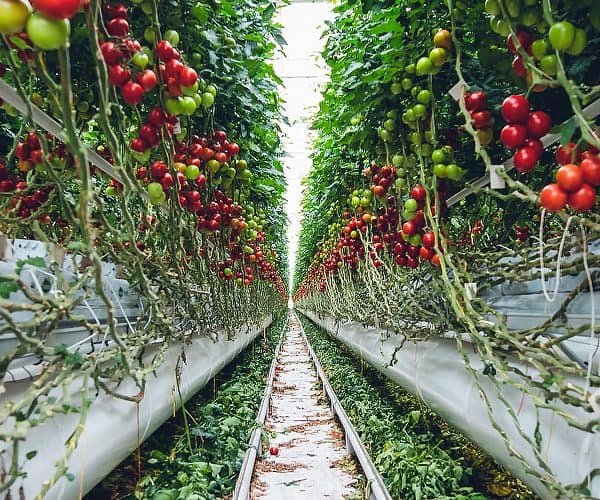
דברים שכדאי לזכור עבור כל הגדרת תאורה
בחר את הספקטרום הנכון
כל הצמחים זקוקים לאור PAR (קרינה פעילה פוטוסינתטית) בטווח אורכי גל של 400 עד 700 ננומטר.
בדוק את דרישות רמת האור
רמות האור המשלימות צריכות להיות רק חלק מרמת האור המלאה, ורמות האור הפוטופריודיות יכולות להיות אפילו נמוכות יותר. אתה צריך כלים שיכולים למדוד במדויק את רמת האור הטבעי בחממה שלך, כמו גם את רמת האור הנוצרת על ידי תאורה משלימה.
בדוק את האזורים המוצלים של המתקנים
תאורת החממה המשלימה LED מטילה צל. עליך לוודא שאזורים קריטיים אינם חוסמים את האור הטבעי. זהו נושא שכדאי לך לדון בו עם מעצב התאורה שלך בעת תכנון הפריסה שלך.
יעילות תאורה
עלויות האנרגיה הן ההוצאה השנייה בגודלה בחממה, ותאורת היבול יכולה לתפוס חלק גדול מעלויות התפעול הכוללות. יהיה עליך לשקול את ההשקעה הראשונית מראש מול התשואה הפוטנציאלית.
דרישות חשמל
בין אם לחממה שלך יש את התצורה החשמלית הדרושה להפעלת גופי תאורה לחממה, החיווט, קופסת המפסק ומגברי השירות שלך הם כולם גורמים שיש לקחת בחשבון.
סיכום
גופי תאורה לחממה חשובים כדי לעזור לצמחים לשגשג בחממה. ישנן אפשרויות רבות זמינות כדי לענות על הצרכים של סוגי צמחים שונים ושלבי צמיחה.
זו הסיבה שכגנן אתה צריך לעשות קצת מחקר על העלות הראשונית של הקמת אורות, סוגי הצמחים שיש לך, הצרכים שלהם וגודל החממה שלך. כדאי לך בחר את אור הצמח הנכון לפיתוח העסק שלך בהתבסס על המציאות שלך לצרכים קונקרטיים אמיתיים.
ג'ייס
כמנהל שיווק דיגיטלי ב-AUXGROW, ג'ייס משלב תשוקה למערכות הידרופוניות ומומחיות באורות LED לגידול. עם ניסיון מעשי והבנה עמוקה, ג'ייס מנחה אותך בעולם של טיפוח בר קיימא.





